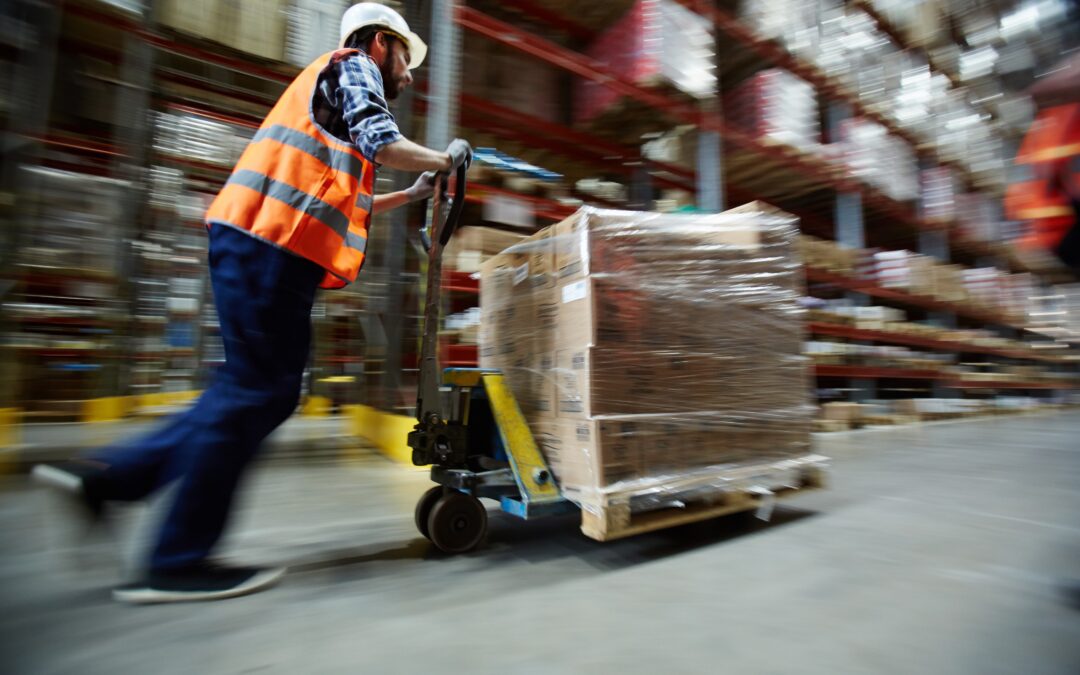Challenging times often produce breakthrough innovations. We’ve seen this in the airline industry, which went bankrupt after 9/11. Legacy carriers refused to innovate until economic realities forced them to consolidate and change their fee structure. Similarly, from the ashes of the dot-com demise of 2001-2002, the internet grew.
I’ve spent 35 years managing and operating disruptive investments in logistics businesses that have enjoyed decades of protected markets, impenetrable entrance barriers, or opaque information systems. Cloaked in these artifices they become complacent. Then, suddenly, a social or economic crisis comes along, and these calcified organisms cannot cope. Frailties too long ignored open like fissures and the dam breaks.
This same forced adaptation is happening now in the global logistics network. In 2019, after nearly two decades of point-and-click shopping, online retail only mounted to 11% of total sales. Retailers could not shake their obsession with real estate. In 2021, post-COVID-19, we expect online sales will hit 50% of total sales, and it seems every major brand has sought bankruptcy protection while Amazon has seen record profits. The Pandemic has broken every mold in every sector and will prove to be the greatest catalyst for innovation in recorded history.
As logisticians, we have been too slow to adopt technology to help us navigate the complexities of the global supply chain. COVID-19 has accelerated years of disruption into just seven months. Consumer buying patterns have radically shifted away from brick-and-mortar stores. Supply chains are moving near-shore, and distributors must respond to every twitch of fickle consumers, now spoiled by limitless options and two-hour delivery. Alas, our information infrastructure is woefully underdeveloped. Siloed operating systems from node to node are slowed by a lack of common data standards. Analytical tools for determining systemic impedance, productivity, and infrastructure utilization are in their infancy.
We can’t ignore the unintended consequences of our malaise. The carbon trail from the movement of assets is the greatest inorganic threat to the planet’s ecosystem. Cars, trucks, trains, and planes all contribute to climate change. We must seize the moment. We must learn to move more assets with less infrastructure and less “friction”. The cultural transformation among logisticians, embracing the power of information, is permanent. Legacy thinkers will be unwelcomed in the new order, and companies that resist will be disintermediated. It’s a perfect storm that will result in unprecedented gains.
Here are three accelerants that are radically and permanently reshaping the logistics sector:
Crossing the E-Commerce “Tipping Point”
Some of the greatest brands in history like Sears and Kmart are long gone. Many other iconic retailers are in bankruptcy or waiting their turn. Barney’s New York, Saks Fifth Avenue, Lord & Taylor, Brooks Brothers, J.C. Penney, J. Crew, Lucky Brands – need I go on? As this thinning of the herd evolves, malls search for meaning and repurpose.
While consumer demand continues unabated, a new generation of smaller, more nimble merchants with an online orientation are taking market share. In the second quarter of 2020, total revenue of Amazon and Shopify grew [40%%] and [97%] over the comparable quarter in 2019 respectively. Etsy rose [137%] in the same period. Merchants selling fewer SKU’s and niche products are the new normal. Easy access to global markets, third-party distribution, and thousands of manufacturing options allow these upstarts to compete on par with the biggest brands. Many have no interest in bricks and mortar, using it mainly to showcase new products.
Retailers will migrate to outsourcing
The shift to e-commerce and the growth of smaller vendors means fewer merchants will have resident distribution infrastructure and will need to outsource critical functions. Third-party logistics providers (3PL) are growing exponentially. 3PL’s provide storage, fulfillment, and transportation services. Their expertise and scale can result in significant cost savings, allowing vendors to focus on their core business.
The solution has been to customize 3PL services. 3PLs are enhancing their digital capabilities, responsiveness, and flexibility in order to satisfy more frequent customer changes. Last-mile logistics? Climate-controlled packaging? Same-day delivery? What kind of quality assurance does a client need? To attract and keep new clients, 3PLs now offer more services to more clients than ever before.
COVID-19 accelerated widespread adoption of E-Commerce platform technologies like Amazon, Shopify, and Magenta to facilitate massive disintermediation. Rent your guest room, share your car, or sell your crafts directly to a global end market. Marketplace platforms allow buyers and sellers to meet “virtually”, without the cost of expensive real estate and distribution infrastructure. Now you can even lease commercial warehouse space “on-demand,” when and where you need it. Warehouse Exchange, an online marketplace, matches buyers and sellers of excess warehouse space without historic burdens like personal guarantees, long-term commitments, or restricted access.
These new e-commerce vendors–many of whom are the next generation of entrepreneurs–look for warehouse space via a web site, not a broker. They want a smaller warehousing footprint, their own partitioned space, and total flexibility – attributes traditional 3PLs cannot offer.
Logistics comes closer to home
Supply chains have certainly been disrupted by COVID in recent months, drastically slowing global production. While cessations hurt income in the short term, it also forced a long-awaited reckoning in the proximity and resiliency of our supply chains.
The labor cost advantage of producing in a factory in rural China for example, is now outweighed by the duration and inflexibility of a long supply chain. Increasingly, more manufacturing will occur in the U.S. or Mexico, to shorten the supply chain by three to four months. A few months trimmed amounts to improved agility; a company can pivot their product mix as consumers respond. Manufacturing closer to point-of-sale now reaps benefits that far outweigh the deteriorating labor cost differential. We unfortunately saw that at the beginning of COVID-19, when factories and centers had to shut down and the world was unable to get PPE, face masks, and more.
Geospatial Intelligence will transform science
COVID-19, a devastating blow to public health, managed to shock global traders into responding to new and likely permanent business demands. Globalization requires reliable supply channels, but the pandemic showed us how fragile our system really is and how vulnerable it can be to socioeconomic whim.
The great pastime of “shopping” will never die but buying essentials will be largely point-and-click. Logisticians have embraced technology. Soon billions of sensors will be connected to the Worldwide Sensor Web (WSW), allowing users to query single units, or curate groups of widely distributed, heterogeneous sensors. Temperature, weight, ownership, location, tampering, pressure, speed, and dozens of other sensed qualities will be instantly accessible and easily viewed on interactive 3D maps.
As with the proliferation of the internet, hundreds of innovators will discover new ways to harvest this rich dataset, which until now has been largely untapped. We are heavily investing in this new generation of powerful distributed sensing services and software. Intel is developing the IrisNet (Internet-scale Resource-Intensive Sensor Network Services). Our partners at Environmental Systems Research Institute (ESRI) have more than 350,000 customers subscribing to their ArcGIS platform, where they can customize and map geospatial intelligence.
The science of logistics is the study of movement. The earliest inhabitants used “efficient movement theory” as they dragged a carcass to their lair. But we are at a historic inflection point, where technology and consumer demand have collided. The transformation is unprecedented and the opportunities to create value are limitless.
Mr. Rosenthal joined Saybrook shortly after its inception in 1990. He brings 29 years of logistics experience in complex transactions as an advisor, operator, and investor on behalf of financial institutions, bondholders, investors and his own account in public and private enterprises. While head of Saybrook’s Advisory Group, Mr. Rosenthal led some of the largest transformations in history, including Pacific Gas and Electric Company and United Airlines. Prior to joining Saybrook in 1990, he founded and served as Chairman and CEO of NetAir International Corporation, which became the nation’s largest non-scheduled certificated carrier. Mr. Rosenthal serves on the boards of Esri Saybrook Partners, LLC, Taylored Services, Global Infrastructure Solutions, Total Transportation Services, and Harbor Performance Enhancement Centers. He Chairs the USC Center for Global Supply Chain Management and Chairs the U.S. Department of Infrastructure Finance Sub-Committee.
Can’t stop reading? Read more
US Pipeline Operator ONEOK Inks Two Deals for $5.9 Billion
US pipeline operator ONEOK Inc. agreed to buy a Permian Basin rival and a controlling stake in...
Blackstone Is Said to Seek A$5.5 Billion Loan for AirTrunk Bid
Private equity firm Blackstone Inc. is in discussions with banks for a five-year loan of about...
Thrive Capital to lead multi-billion dollar OpenAI investment round at $100bn valuation
OpenAI, the company behind the popular AI tool ChatGPT, is in advanced talks to secure several...




